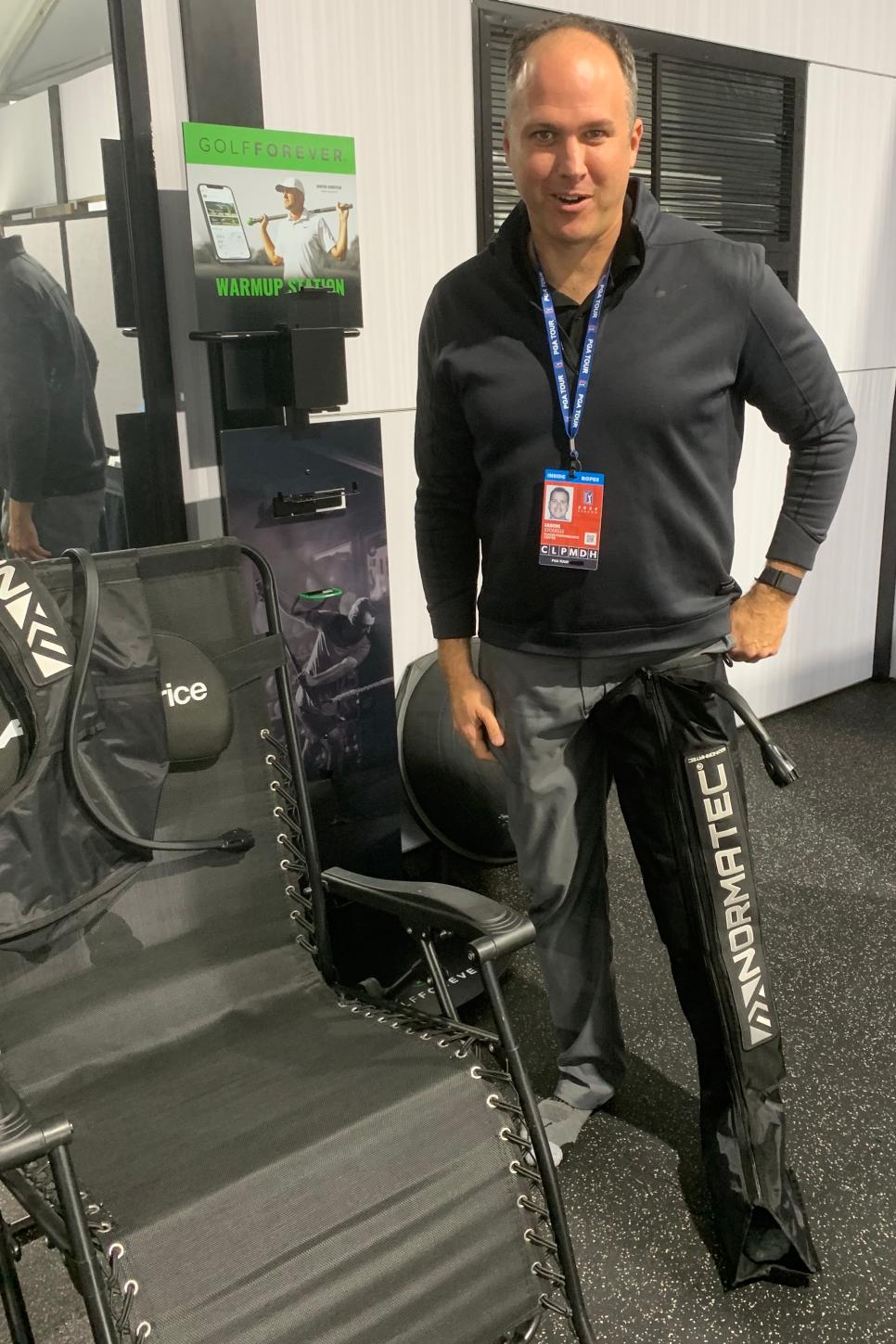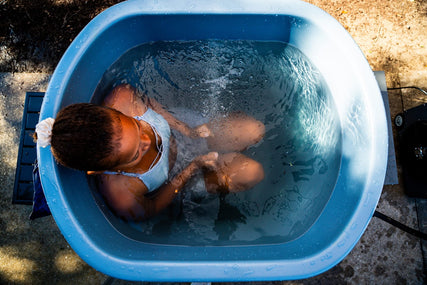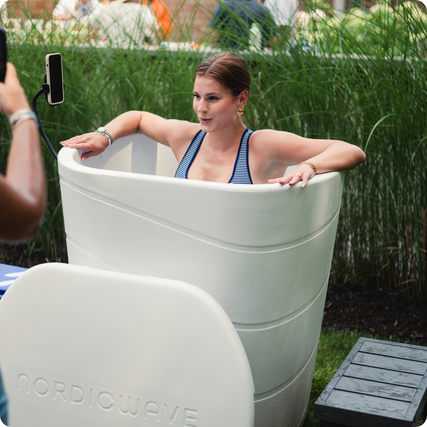Cold tubs! High-tech boots!! Check out the new fitness players are now using at PGA Tour stops
AN DIEGO — Back in professional golf’s era of oversized bellies and visions of Arnold Palmer more than occasionally puffing on a cigarette, if a player sought medical treatment at a tournament, he had probably just tweaked a back muscle or wrenched a knee. A few stretches and a couple of aspirin later, he was “fixed.” Gary Player was probably golf’s first true fitness fanatic, but most of his more rotund peers rolled their eyes and took another swig of beer.
It wasn’t until Tiger Woods came along running 30 miles a week—a routine he now regrets—including long jogs before his competitive rounds, that many other players hit the road and the gym.
These days, there are dozens of pros who grew up seeing Tiger’s physique transform into something comparable to a New York Yankees outfielder, and those fitness disciples are going well beyond what Woods could ever imagine. They can do so because they have more tools and science at their disposal.
Two large trailers have traveled to each PGA Tour site for two decades—one for workouts and the other for treatment. For years, those spaces were fashioned to look like your average 24 Hour Fitness, with treadmills, and weight machines. Now they’ve been replaced by kettle bells, stretching bands, medicine balls and percussion massagers. And that’s just the low-tech stuff.
In what could be deemed a new era in tour fitness beginning this year, there is a third outlet for the golfers at the “player recovery” tent. Starting in 2024 at each tournament, on-site organizers are required to erect tent structures and supply electricity and water so the golfers can use one of three tour-provided 40-degree cold plunge tubs or sit in 150-degree heat in an infrared sauna.
“Obviously, it’s evolved,” Stodelle said at the Farmers Insurance Open, where he gave a tour of the facilities set up near the Torrey Pines driving range. “I’d say guys are a lot more proactive now. Guys in this younger generation, fitness is a priority. The rookies who come out already have full workout routines they established in college.”
Legs ache? Tour pros now can plop into a zero-gravity chair and pull on a set of Normatec compression boots. The devices pulsate and massage, and some players say that after 15 minutes, it doesn’t feel like they just spent five hours traversing the course.
Basically, it’s a spa day every day on tour.
Stodelle estimates that 50 to 60 percent of the players in a field each week come in for some kind of help from three athletic trainers, two physical therapists and a chiropractor. Meantime, the players are only beginning to discover the benefits of the new recovery center. In each of the last two weeks, about 15 to 20 players each day have come for the cold plunges and sauna.

PGA Tour trainer Jason Stodelle demonstates the Normatec leg device that massages and helps recirculate blood. (Tod Leonard)
Maybe it shouldn’t be surprising that Nicolai Hojgaard, a 22-year-old European up-and-comer who says he takes quick dips in the 40-degree ocean water at home in Denmark, is a big fan of settling chest-deep into ice water in what essentially is a metal barrel.
Ice baths have been used for centuries, but only more recently have scientific studies affirmed the benefits. The plunges are said to improve muscle recovery and reduce inflammation, accelerate the metabolism and even improve mood.
Three to five minutes is about the max anyone stays in the tub. “There’s pretty good research out there that beyond five minutes, you’re pretty much torturing yourself,” Stodelle said.
The tubs aren’t for everybody. Several tour players surveyed this week said they don’t use them, even if they regularly work out. Michael Kim, who grew up in the warm climes of San Diego and doesn’t have much body insulation at 165 pounds, all but scoffed at the notion of intentionally freezing himself. “No, sir, I hate the cold. I will probably never be a cold plunge guy,” he said.

The new PGA Tour recovery center for players features three rooms that have a shower and cold plunge tub. (Tod Leonard)
As a player enthusiastic about fitness, Hojgaard picked a fine time to play his first full season on the PGA Tour, joining a DP World Tour class of the top 10 from last year’s points list who earned their cards. Hojgaard, who played on Europe’s winning Ryder Cup team last fall, finished second behind Rory McIlroy in the 2023 DPWT Order of Merit—a result buoyed by him winning the season-ending DP World Tour Championship.
They might have had some nice workout stuff across the Atlantic, but nothing like Hojgaard is experiencing now.
“Here, it's perfect with the setup,” Hojgaard said. “It doesn't get any better. I think for everyone, you can do your stuff golf-wise, but can you do all the wellness and recovery stuff also.”
Asked what he sees on the horizon, tour chiropractor Joshua Kollmann cited the use of hydrogen water and other dietary tools. Ultimately, though, he arrived at two letters: “A.I.” Kollmann said he recently saw a presentation that showed how doctors and trainers, by using blood and hair samples, could produce a fitness and nutrition plan that would be totally specific to each individual based on their genetics. “I’ll say if you hang with me for three months, these are the four different things we’re going to do, and the change will happen,” Kollman said. “Technology is going to drive so much of our assessment.”
The chiropractor noted that WHOOP devices were helpful in identifying tour players who contracted COVID-19, and Trackman has been game-changing on the golf side. That kind of data will only become more useful as scientists and engineers press forward. “It’s going to be the people who take the data and make it dance,” Kollmann said. “Then, significant performance changes will happen. That’ the ticket. It’s like Trackman. You have all of that data; now what are you going to do with it.”
Probably to the dismay of the distance alarmists, the likely result is players who continue to be stronger, faster and better.
“It’s exciting; it’s scary; it’s cool,” Kollmann said. “It’s going to be good.”
















Share:
Best Cold Plunge for Small Spaces
The 8 Best Ice Bath Tubs For Recovery